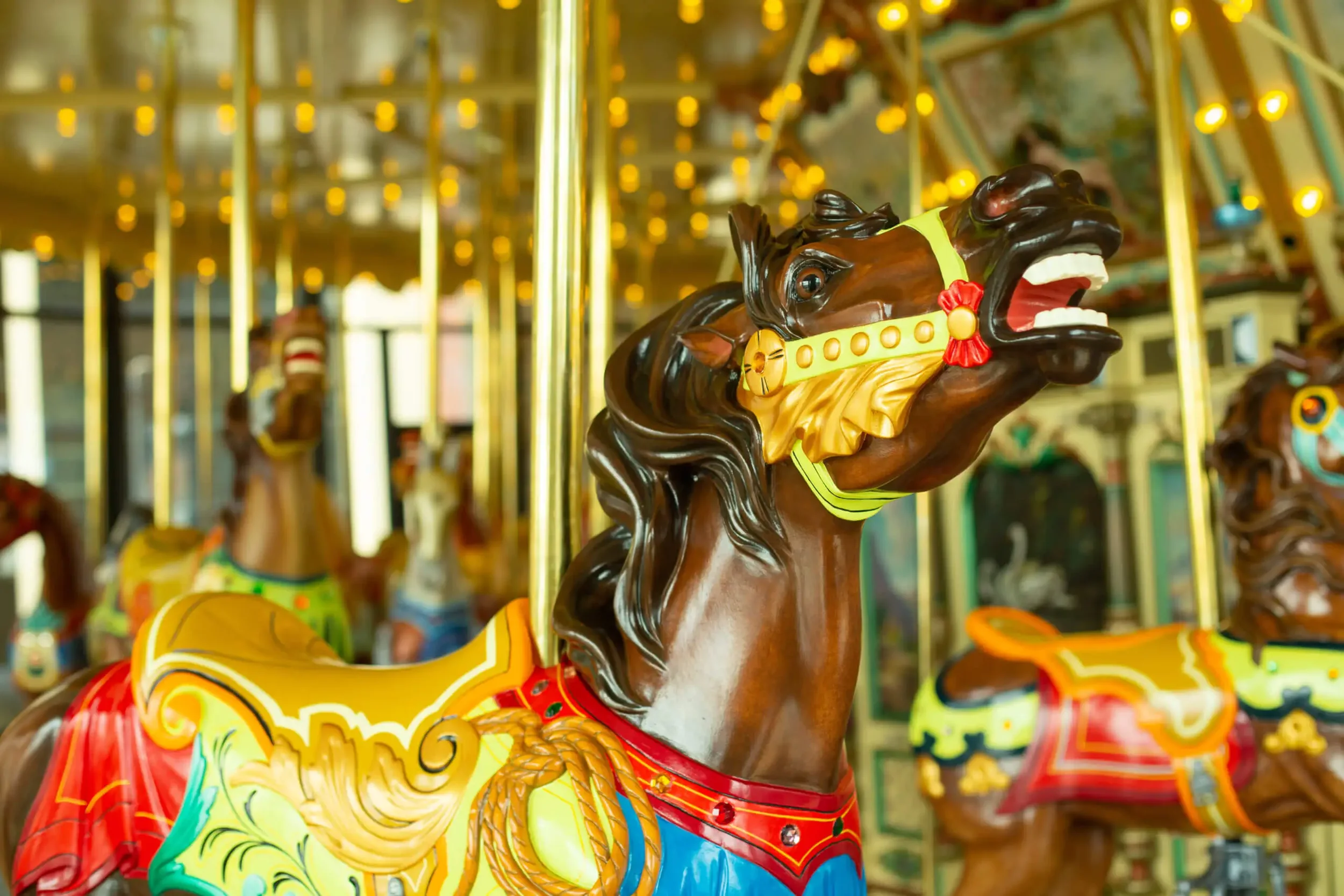Beneath the Surface: Honoring the Craft of Carousel Upholstery
Preserving Carousel History with Original Horsehair Upholstery at the Grand Rapids Public Museum.
There’s a quiet kind of craftsmanship unfolding at the Grand Rapids Public Museum, and while it’s one that most visitors will never see, it speaks volumes about the museum’s commitment to authenticity, history, and care.
The museum team has reached a significant milestone in the restoration of its beloved 1928 Spillman Carousel: the preservation and reuse of the carousel’s original 100-year-old horsehair upholstery. Yes – real horsehair. Tucked inside the chariot cushions for a century, this natural material is now being gently removed, meticulously cleaned, and thoughtfully restored before being reinstalled. It’s an extraordinary detail that honors the unseen artistry of the past.
Nikki Nass working through the restoration process for the GRPM carousel.
Restoration Rooted in Integrity
To ensure the process was carried out with both precision and historical sensitivity, the museum brought in Nikki Nass, a Grand Haven-based upholstery specialist with a deep respect for tradition and a passion for preservation.
"The most sustainable material that you can put back in upholstery – and keep the integrity of the upholstery – is the original," Nikki explained, "which is the horsehair.”
Used for its availability, durability, and flexibility, horsehair was a common choice for upholstery in the early 20th century. Today, it's far less common, and even when purchased, it’s often mixed with other fibers. The horsehair from the carousel, however, is the real thing. “It’s actually really good, high-quality horsehair,” Nikki noted. “You just wash it, reuse it, and it’s good for a long time.”
“The most sustainable material that you can put back in upholstery – and keep the integrity of the upholstery – is the original.”
Hidden Craftsmanship, Lasting Legacy
The museum’s goal was twofold: preserve the past while preparing the carousel for generations to come. That meant selecting a commercial-grade fabric durable enough to withstand daily use but also reflective of the time period. After restoration, the horsehair is layered with cotton and batting before being finished with this durable outer fabric – one that meets modern fire safety standards without compromising visual authenticity.
And while only a handful of people will ever see the upholstery’s inner workings, the impact is far-reaching. “It gives it more of its natural fit,” said Nikki. “And it just brings it back to its all-natural preservation as well.”
Grand Rapids Public Museum’s 1928 Spillman Carousel. Photo courtesy of the museum.
A Personal Connection to the Past
For Nikki, this project was more than a job – it was a personal honor. “I have a lot of memories of bringing my own children to [the carousel] 20 years ago,” she shared. “To be able to work on it, to have children and people alike be able to ride it for years to come, is very fun.”
That’s the magic of the Spillman Carousel. Overlooking the Grand River, this piece of living history is being lovingly restored from the inside out. With every pass of the needle and every strand of horsehair carefully returned to its place, the museum continues to preserve more than just an object – it preserves a legacy.
For the latest on Grand Rapids developments along the riverfront, stay tuned to the GR& Riverfront.



